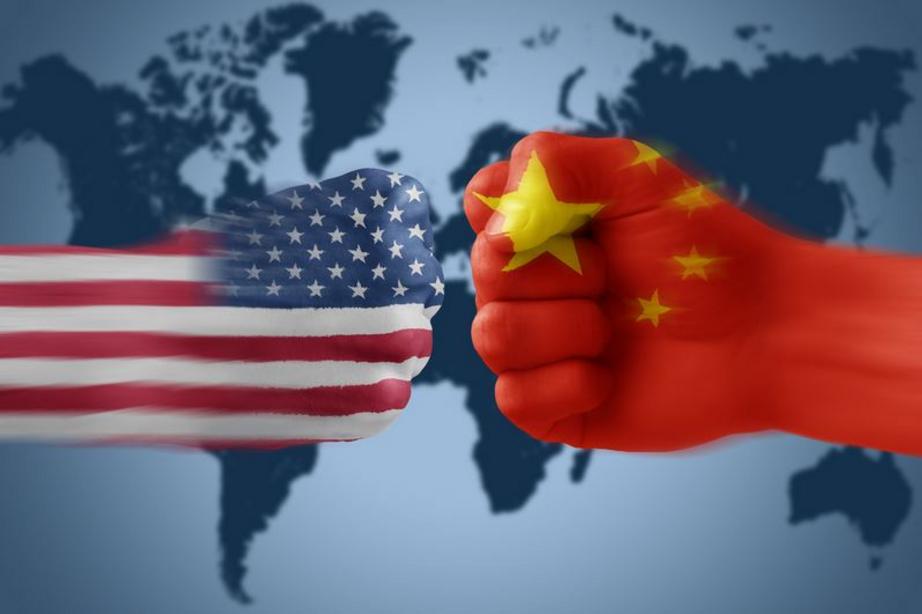Tensions rise between China and the US inching world closer to WW3
While half the media is distracted and obsessed about an extramarital affair that U.S. President Donald Trump allegedly had a decade ago with Stormy Daniels, U.S. geopolitical policy has been shifting towards China, putting us all in danger of conflict with the Communist superpower which has recently become a dictatorship with moves against human rights and presidential rights shifting back to a dynasty style of government.
Over the past few weeks, several events have elevated the U.S. geopolitical tension with China which since the Obama administration has been in turmoil after failed diplomatic discussions. It all started in 2012 when China and the Philippines engaged in a lengthy maritime feud which resulted in rejections of the verdict by China in 2016, increasing the chances of potential conflict in the region.
In 2016, an arbitration court ruled that China had(s) no historic title over the waters of the South China Sea and that it in doing so breached the Philippines’ sovereign rights with its actions.
China reacted by boycotting the proceedings, rejecting them and stating that the ruling was “ill-founded.”
Last November, China announced the creation of two Chinese-controlled international maritime courts that would be used to provide China’s interpretation of maritime law, Epoch Times reported.
Philippines President Rodrigo Duterte responded by stating the man-made islands aren’t pointed at us.
“It’s not intended for us. The contending ideological powers of the world or the geopolitics has greatly changed. It’s really intended against those who the Chinese think would destroy them and that is America,” Duterte noted. “We did nothing.”
The Philippines also just announced possible discussions for joint South China Sea projects only last week, which may be an attempt to ease the tension, Japan Times reported.
China insists that it has “historic rights” over the region which the countries dispute.
For centuries various countries have fought over the territory in the South China Sea – two specific island chains known as Paracels and the Spratlys – and fought over areas alongside the sandbanks and reefs, such as the Scarborough Shoal (known as Huangyan Island in China).
These waters are a main import and export point that allows the passing of five trillions of dollars worth of global trade flow annually through the waters, according to Forbes.
“It’s a question of if those islands are in fact in international waters and not part of China proper, then yeah, we’re going to make sure that we defend international territories from being taken over by one country,” former White House press secretary Sean Spicer said.
China, Vietnam, the Philippines, Taiwan, Malaysia, and Brunei all have laid competing claims to the area.
Beijing states its right to the area goes back centuries to when the Paracel and Spratly island chains were regarded as integral parts of the Chinese nation. In 1947 the Communist nation issued a map detailing its claims.
However, in the past few years, China has begun building man-made islands that many dispute as being military bases.
Last year, former Secretary Of State Rex Tillerson during his confirmation hearing attacked China for “declaring control of territories that are not rightfully China’s,” comparing China’s deployment of its military to other islands, to Russia’s annexation of Crimea.
“The island building in the South China Sea itself in many respects in my view building islands then putting military assets on those islands is a kin to Russia’s taking of Crimea,” Tillerson stated.
China responded to Tillerson’s statement telling the U.S. “speak and act cautiously” after the White House said it would act to foil Chinese attempts to “take over” the South China Sea.
Another key factor rising tensions is the U.S. recognizing Taiwan and encouraging to send senior officials to Taiwan to meet Taiwan counterparts under the Taiwan Travel Act, which detested China, Yahoo News reported.
This may be the red line drawn in the sand on U.S. and Chinese relations. The act, though not legally binding, is said to “severely violate” the One-China principle, as well as the three joint communiqués the US signed with the People’s Republic of China.
The situation with China has since erupted further with recently issued U.S. tariffs and “trade restrictions” against the Chinese Republic. China has since retaliated by issuing sanctions on steel and aluminum imports, as well as food imports and other U.S. products.
U.S. president Donald Trump is now seeking diplomatic cooperation and negotiations with the country to avoid a trade deficit war, ABC reported.
Speaking to global business leaders at a development forum, Vice Premier Han Zheng appealed for cooperation to make economic globalization “beneficial for all.”
“A trade war serves the interests of none,” Han said at the China Development Forum. “It will only lead to serious consequences and negative impact.”
Right now it’s just the potential for a trade war, but things could escalate well past economics; and Bejing’s state media has previously warned any attempt to prevent China accessing its interests in the region risked sparking a “large-scale war.”

